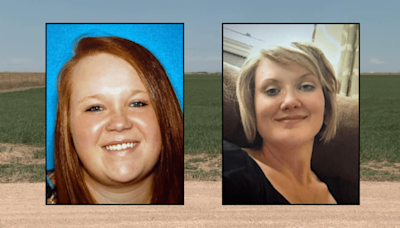Search results
Kansas (/ ˈ k æ n z ə s / ⓘ KAN-zəss) is a landlocked state in the Midwestern region of the United States. It borders Nebraska to the north; Missouri to the east; Oklahoma to the south; and Colorado to the west. Kansas is named after the Kansas River, in turn named after the Kansa people.
- 82,278 sq mi (213,100 km²)
- Overview
- Relief
- Drainage
- Soils
- Climate
- Plant and animal life
Kansas, constituent state of the United States of America. It is bounded by Nebraska to the north, Missouri to the east, Oklahoma to the south, and Colorado to the west. Lying amid the westward-rising landscape of the Great Plains of the North American continent, Kansas became the 34th state on January 29, 1861. In that year the capital was located in Topeka by popular election, outpolling nearby Lawrence by some 2,700 votes. The state’s name is derived from that of the Kansa, or Kaw, whose name comes from a Siouan-language phrase meaning “people of the south wind.”
The geographic centre of the 48 coterminous United States is marked by a limestone shaft and a flag located in a pasture near Lebanon, Kansas, close to the Nebraska border. Some 40 miles (65 km) to the south is the magnetic, or geodetic, centre of the terrestrial mass of North America; this is the reference point for all land survey in the United States, Canada, and Mexico.
Kansas has been characterized as a featureless plain, but its topography is quite varied. The land rises slowly but steadily from some 680 feet (210 metres) above sea level along the Verdigris River in the southeast to just above 4,000 feet (1,200 metres) near the Colorado border; the state’s mean elevation is about 2,000 feet (610 metres). The far western section consists of high plains with few naturally occurring trees and appears flat and endless. Actually, these plains are creased with shallow gullies called draws, which are the product of millennia of erosion and are the locale of some of the state’s most striking geologic formations. Castle Rock, south of Quinter, consists of chalk spires rising high above the level plains. Monument Rocks, a few miles to the west, resemble sphinxes. Near Jetmore is Horse Thief Canyon, which has been likened to the Grand Canyon in miniature.
Britannica Quiz
USA Capitals and Nicknames Quiz
Under irrigation, southwestern Kansas has come to produce truck crops and sugar beets. Northeastern Kansas, once covered by the glacier that crept over most of the northern United States, is hilly and timbered, with many creeks and springs. The southeast, lying near the foothills of the Ozark Mountains, is rough and covered in parts with scrub oak. In south-central Kansas near Medicine Lodge are the Gypsum Hills, which resemble the mesas of the Southwest and are named for the gypsum found in them. In east-central Kansas the Flint Hills stretch from north to south; gentle, rolling, largely treeless, and covered with bluestem, they provide the only extensive unplowed tract of true prairie remaining in the United States.
The principal rivers are the Kansas and the Arkansas. Tributaries of the Kansas are the Big Blue, the Republican, the Solomon, the Saline, and the Smoky Hill, all in northern Kansas. The Arkansas flows into the state from Colorado and winds through southwestern and south-central Kansas, continuing through Oklahoma and Arkansas to the Mississippi River. Tributaries of the Arkansas are the Cimarron, the Verdigris, and the Neosho (Grand).
Are you a student? Get Britannica Premium for only 24.95 - a 67% discount!
Learn More
Kansas has few natural lakes, but a large number of man-made reservoirs have been constructed throughout the state. Among the largest are Clinton Reservoir near Lawrence, Milford Reservoir west of Manhattan, and Wilson Reservoir in roughly the centre of the state.
Millions of years ago much of Kansas was the floor of an inland sea. The land was built up by the deposit of soil and vegetable matter from streams feeding this sea. This residual soil, with heavy concentrations of limestone and gypsum, is among the most fertile in the world, and in it prehistoric fossils of great importance have been found.
Kansas has a temperate but continental climate, with great extremes between summer and winter temperatures but few long periods of extreme hot or cold. The annual average temperature is 55 °F (13 °C). The growing season ranges from mid-April to mid-September. Normal annual precipitation ranges from less than 20 inches (500 mm) in the west to more t...
Buffalo grass is native in the west and central areas of the state, bluestem around the Flint Hills, and bluegrass in the east. Wildflowers of many kinds are found in all parts of the state, and sunflowers grow in profusion (Kansas is popularly known as the Sunflower State). The cottonwood, the state tree, grows throughout Kansas, while in the northeast there are many oak, walnut, and maple trees, as well as cedar and elm.
Western Kansas abounds in quail and pheasant and has the largest population of prairie chickens (grouse) in North America. Deer, once almost extinct, were protected by law for many years and have multiplied to the degree that hunting again has been allowed. Bison, which had nearly disappeared from Kansas, have increased in number and are raised on ranches and farms throughout the state. Several large herds are located on public preserves in the southwestern portion of the state.
- Flint Hills National Scenic Byway. Visons of endless prairie land under vast skies come to life on the 76-kilometer Flint Hills National Scenic Byway. This rural road passes through Tallgrass Prairie National Preserve, home of the last undisturbed expanses of tallgrass prairie in North America.
- Wetlands & Wildlife National Scenic Byway. This tranquil, 124-kilometer byway was made for nature lovers. Passing through the wetland landscapes of Cheyenne Bottoms and Quivira National Wildlife Refuge, the aptly named Wetlands & Wildlife National Scenic Byway is an important annual waypoint for millions of migratory birds and waterfowl.
- Lucas. For a town of 400 residents, the arts-oriented community of Lucas has attracted a big name as the Grassroots Art Capital of Kansas. Check out the eclectic collection of handmade art at the Grassroots Art Center and tour of the Garden of Eden, an unusual outdoor sculpture that was a finalist for one of the Eight Wonders of Kansas.
- Dodge City. The once-lawless, gun-slinging town of Dodge City, Kansas, epitomizes the Old West and is still a haven for would-be cowboys. Explore the Boot Hill Museum, see life-sized outlaws at the Gunfighters Wax Museum, attend a rodeo, follow wagon tracks on the Santa Fe Trail and walk the Dodge City Trail of Fame to discover Old West landmarks.
Nov 9, 2009 · Learn about Kansas, the 34th state to join the union, and its role in the Civil War, the civil rights movement and the discovery of helium. Explore its geography, culture, economy and landmarks with HISTORY.com.
Kansas is a state in the Great Plains region of the United States of America. Thanks to The Wizard of Oz, many non-Kansans (and some Kansans as well) think of it as a place from which to escape; however, there are a lot of great places to visit, particularly if you are interested in the history of the American West.
Travelks.com. Plan your next Kansas Adventure! Oversight and Regulation. As part of the Department of Commerce, Kansas Tourism’s mission is to inspire travel to and throughout Kansas to maximize the positive impacts that tourism has on our state and local communities.






